SINGING MY PARENT’S COUNTRY: NEW PAINTINGS BY PAULINE SUNFLY
(September 29-November 5, 2022)
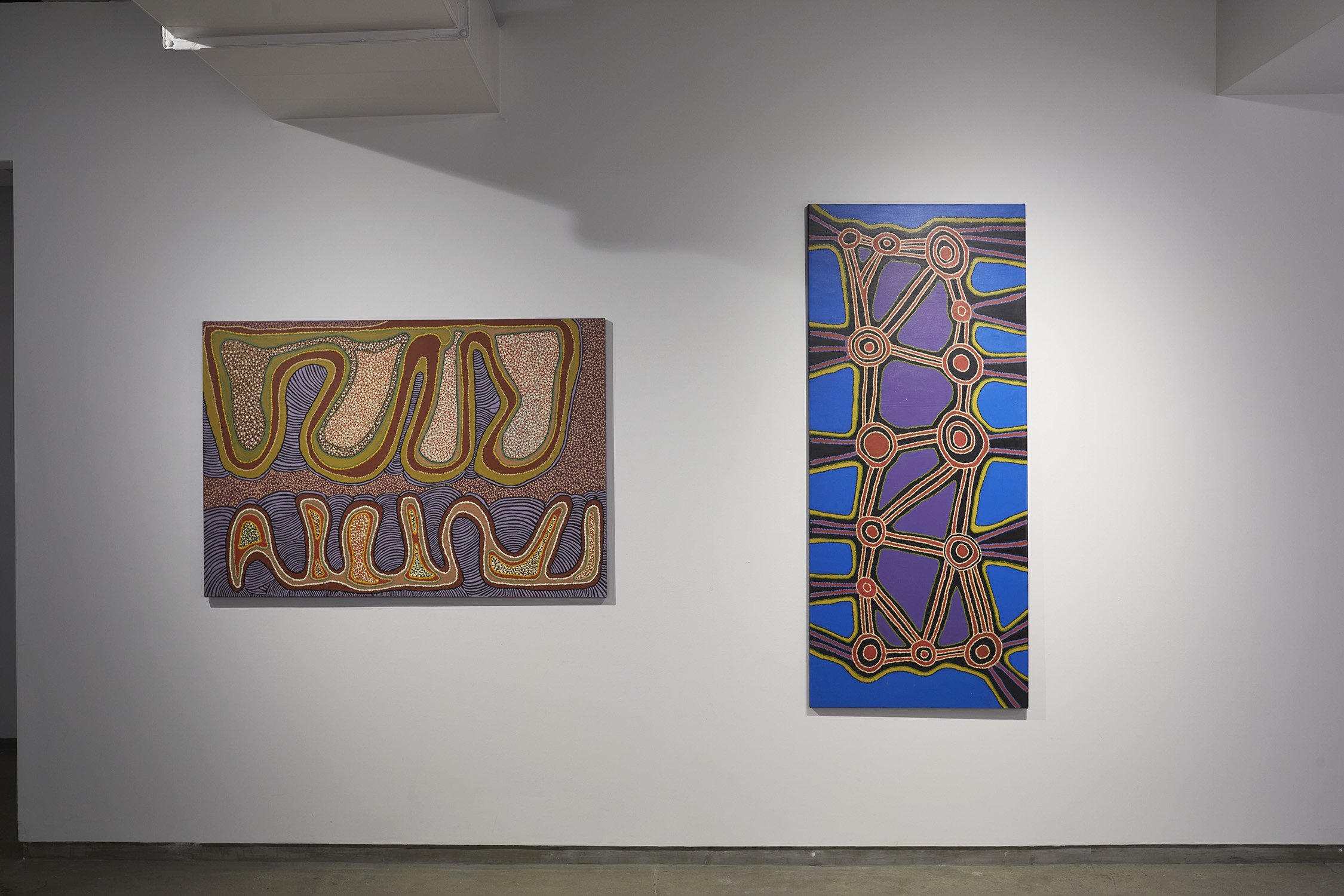
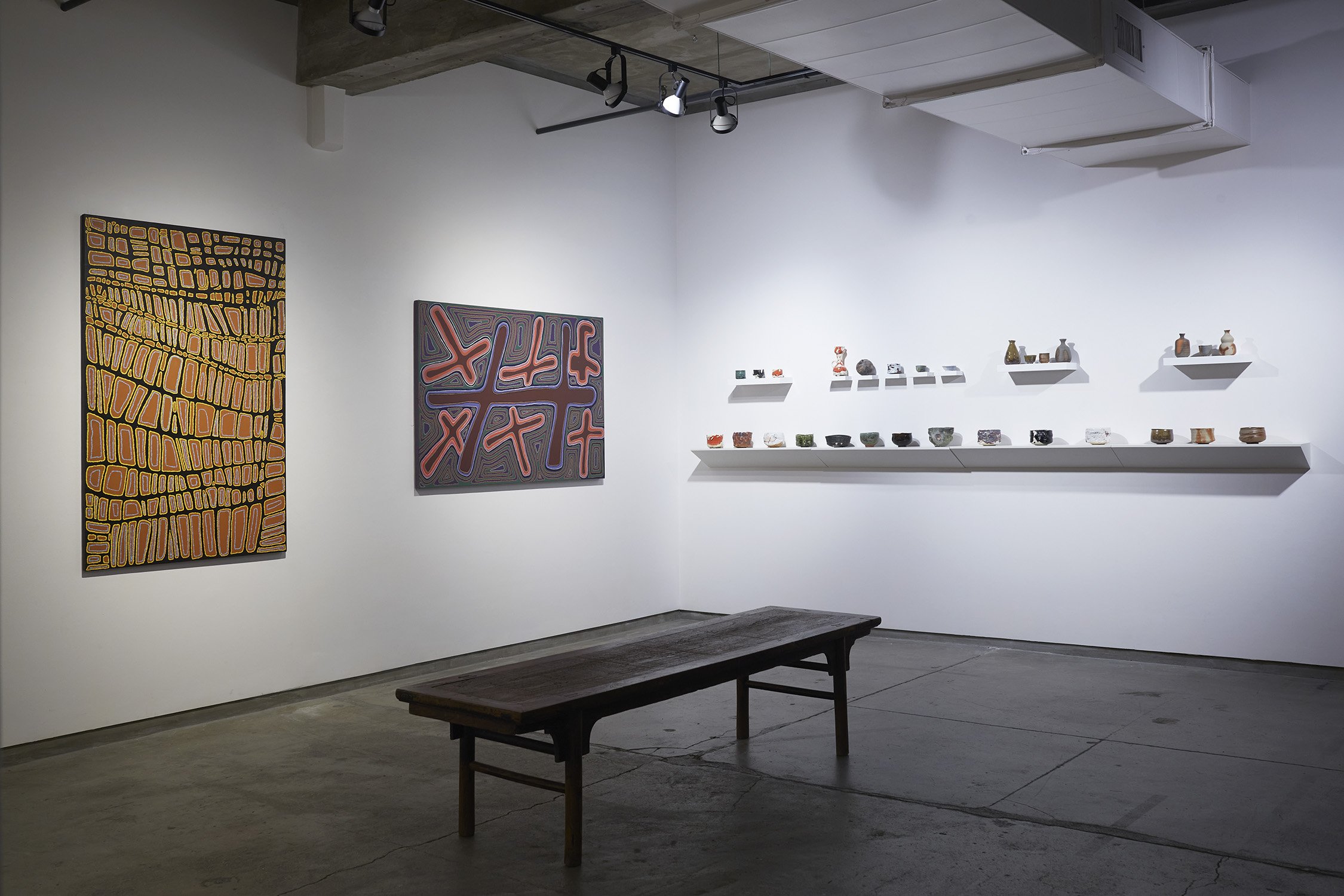
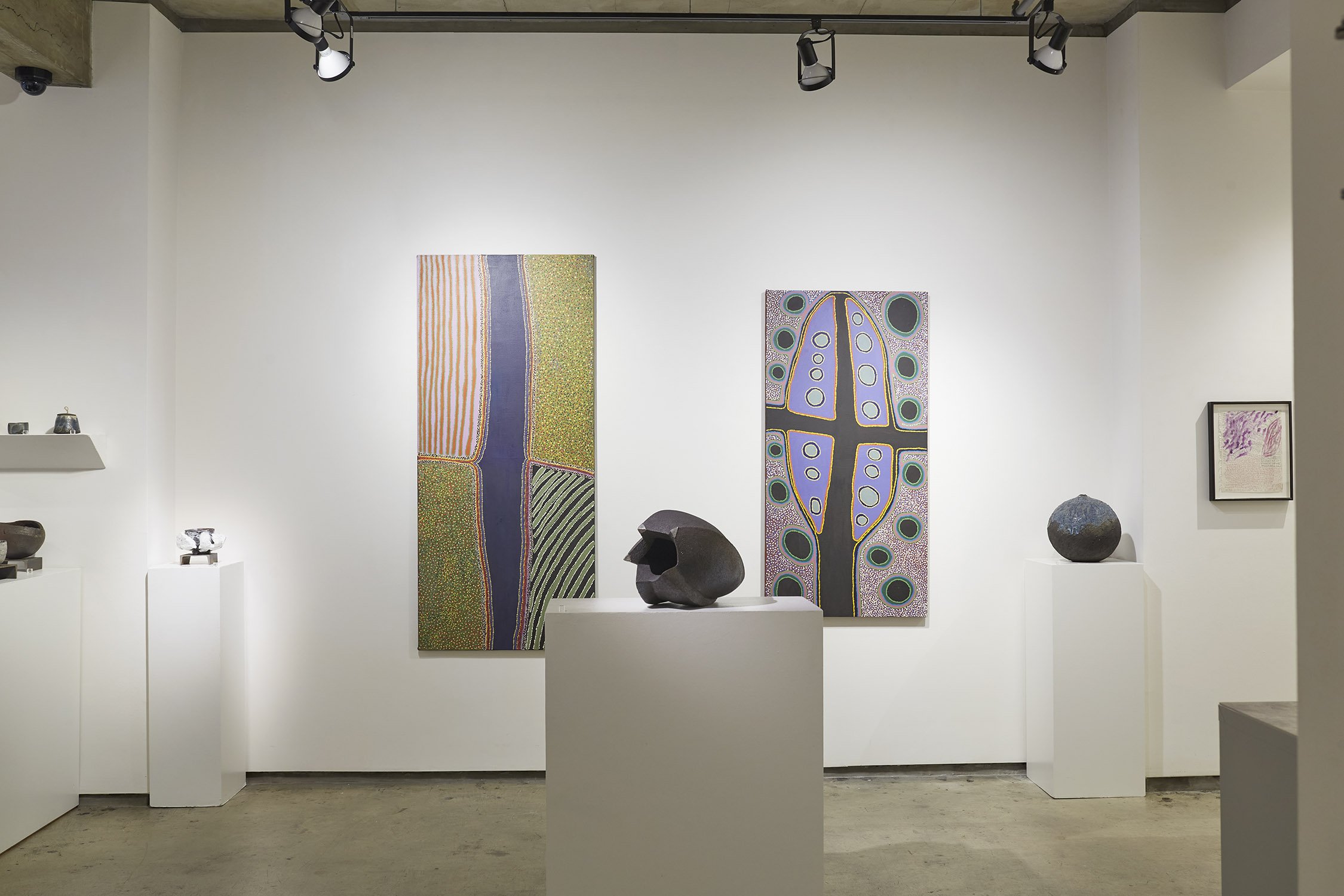
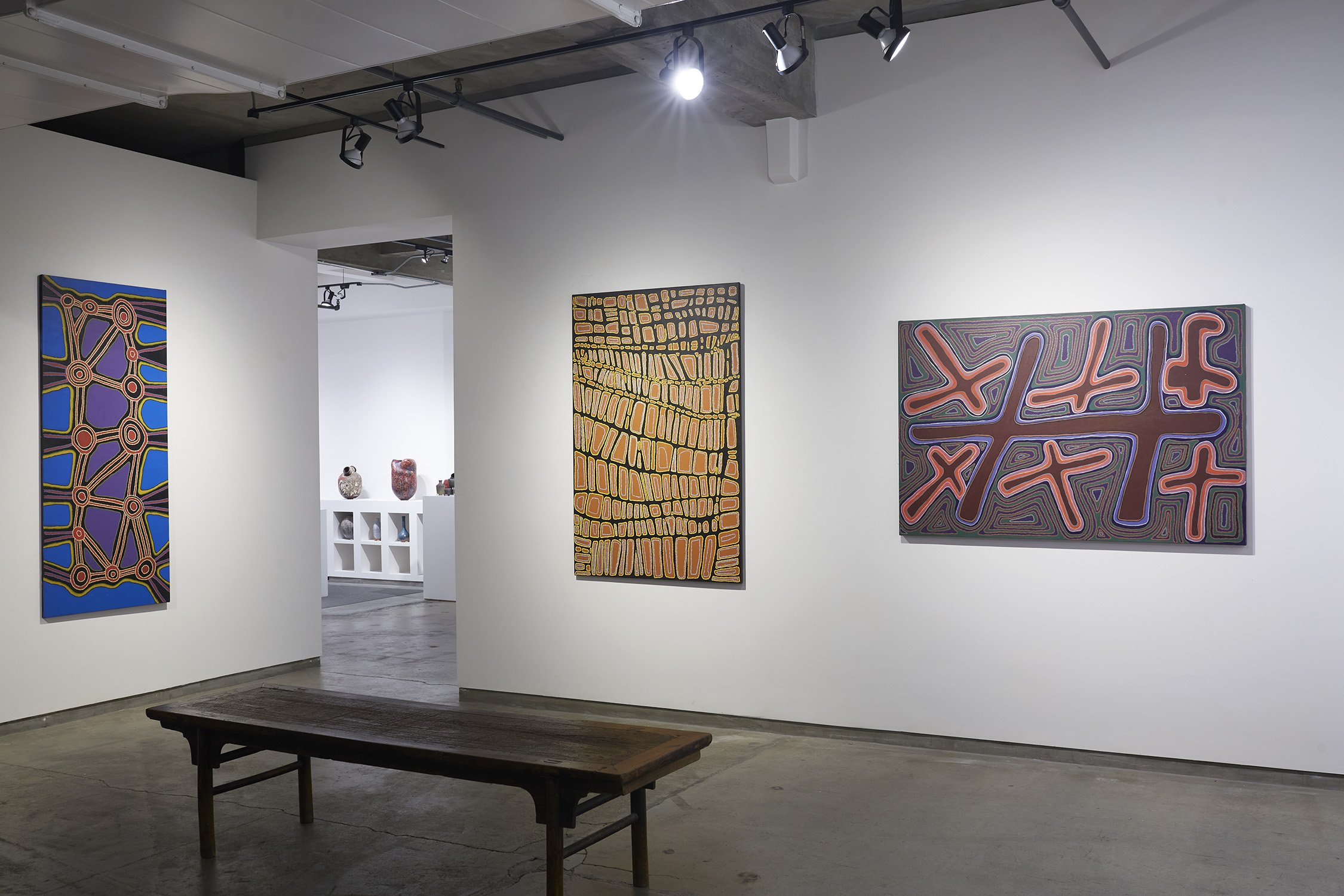


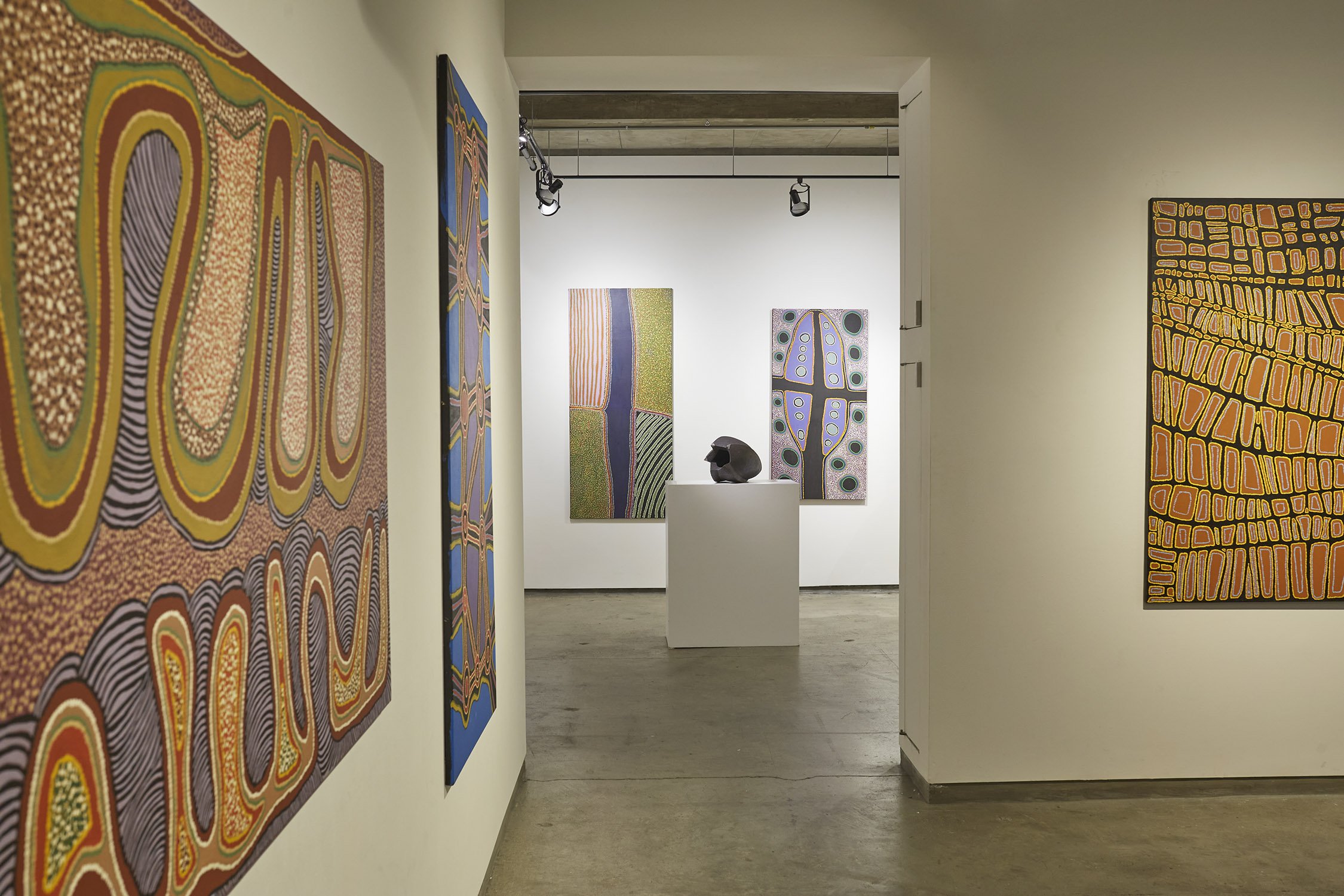
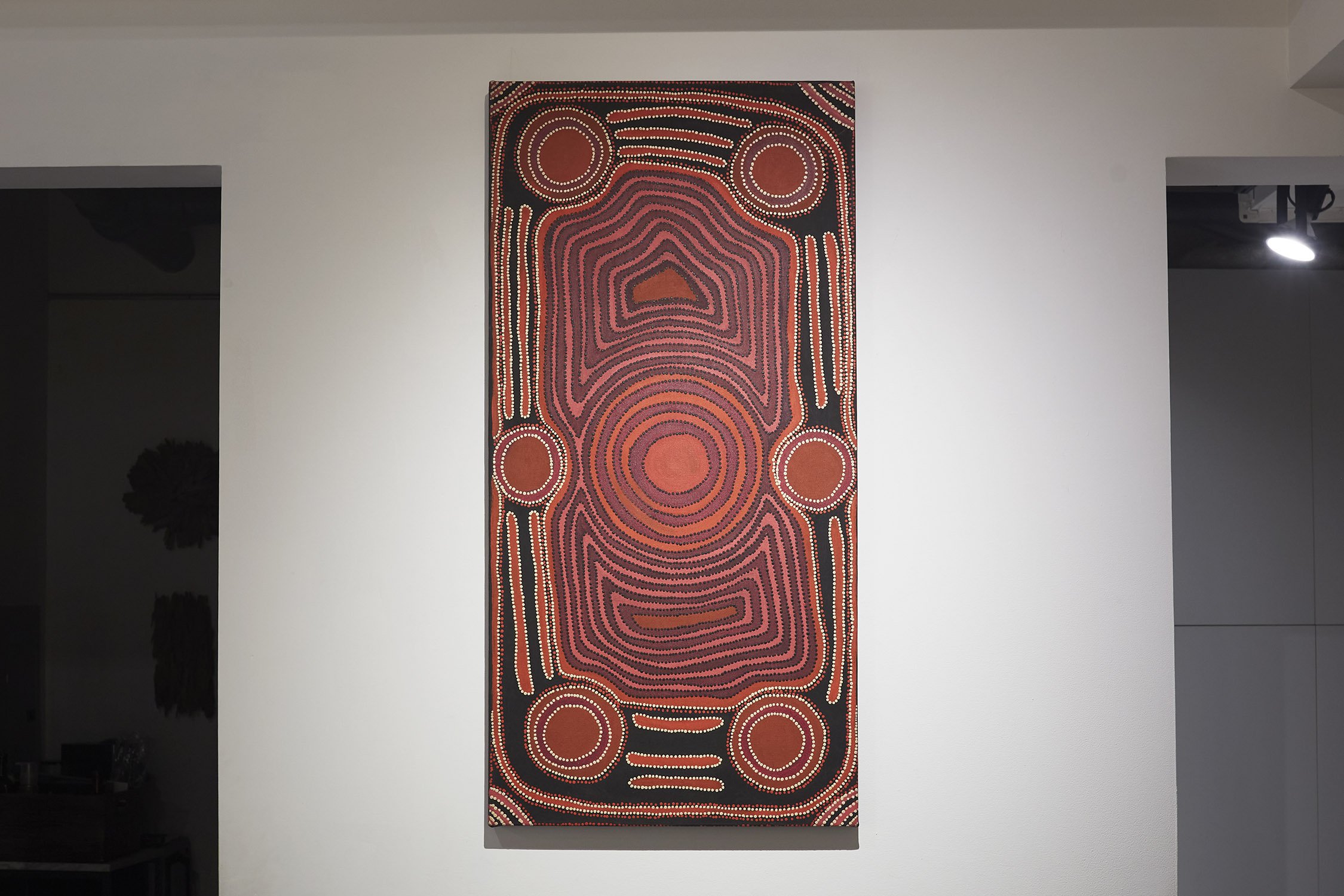
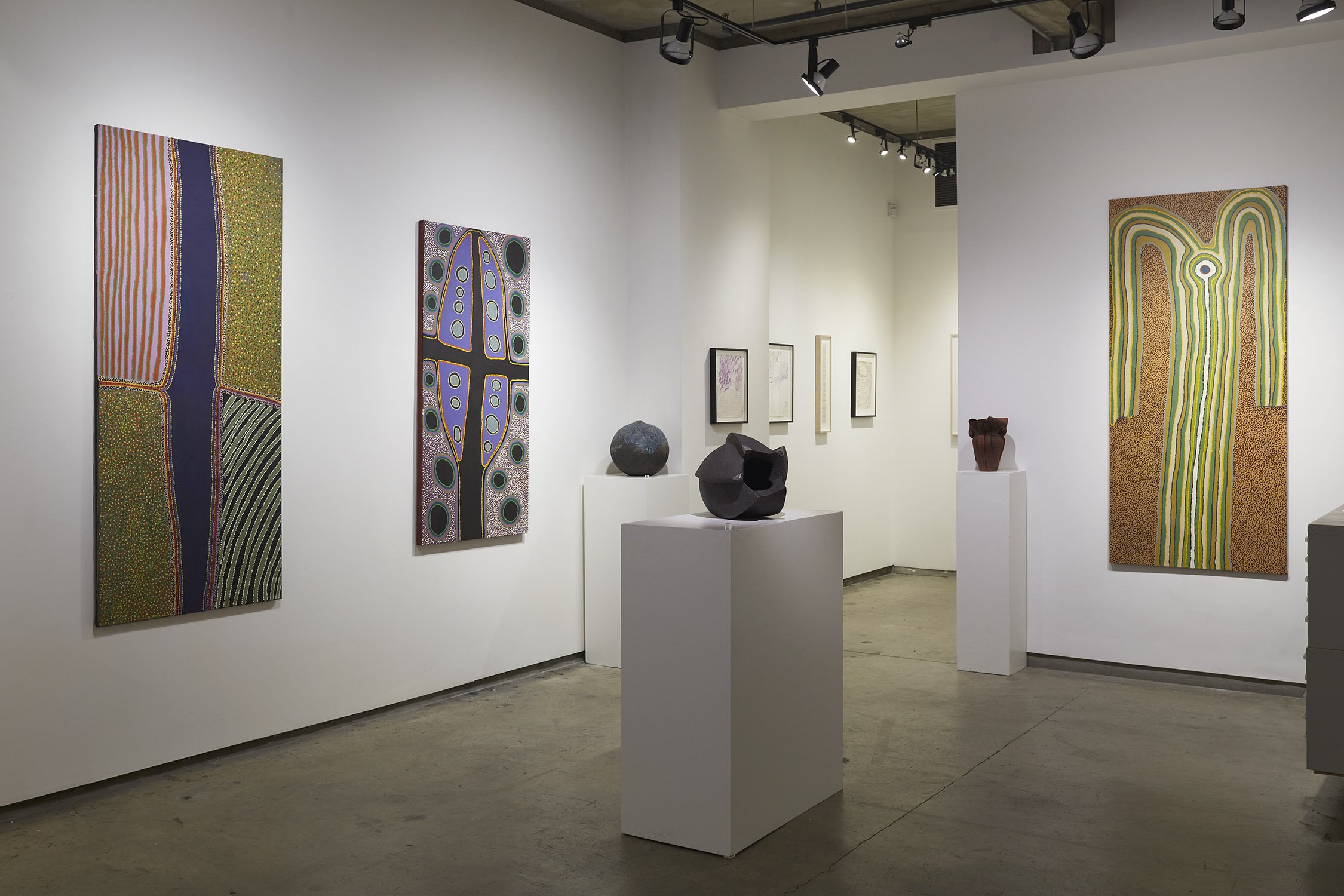
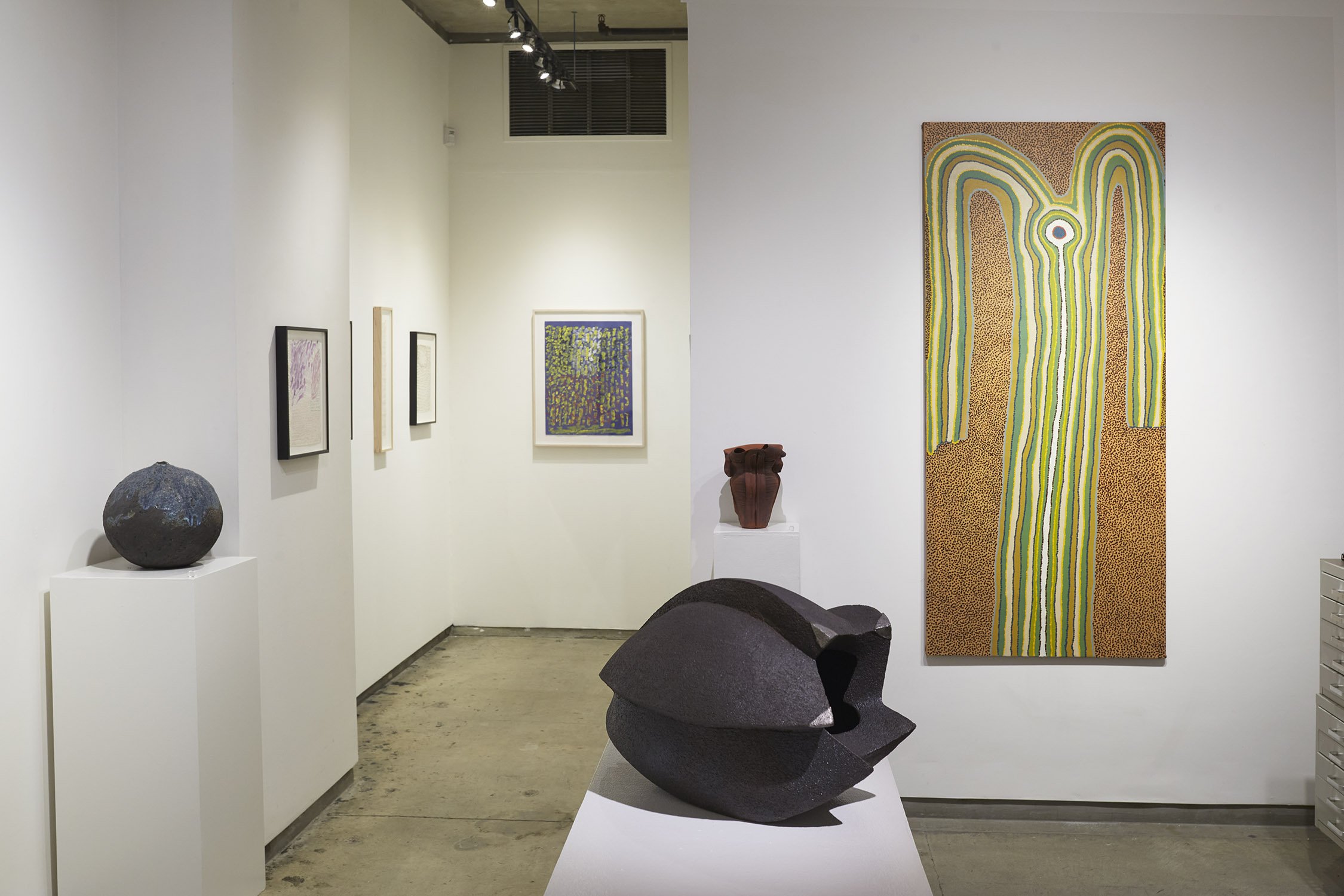
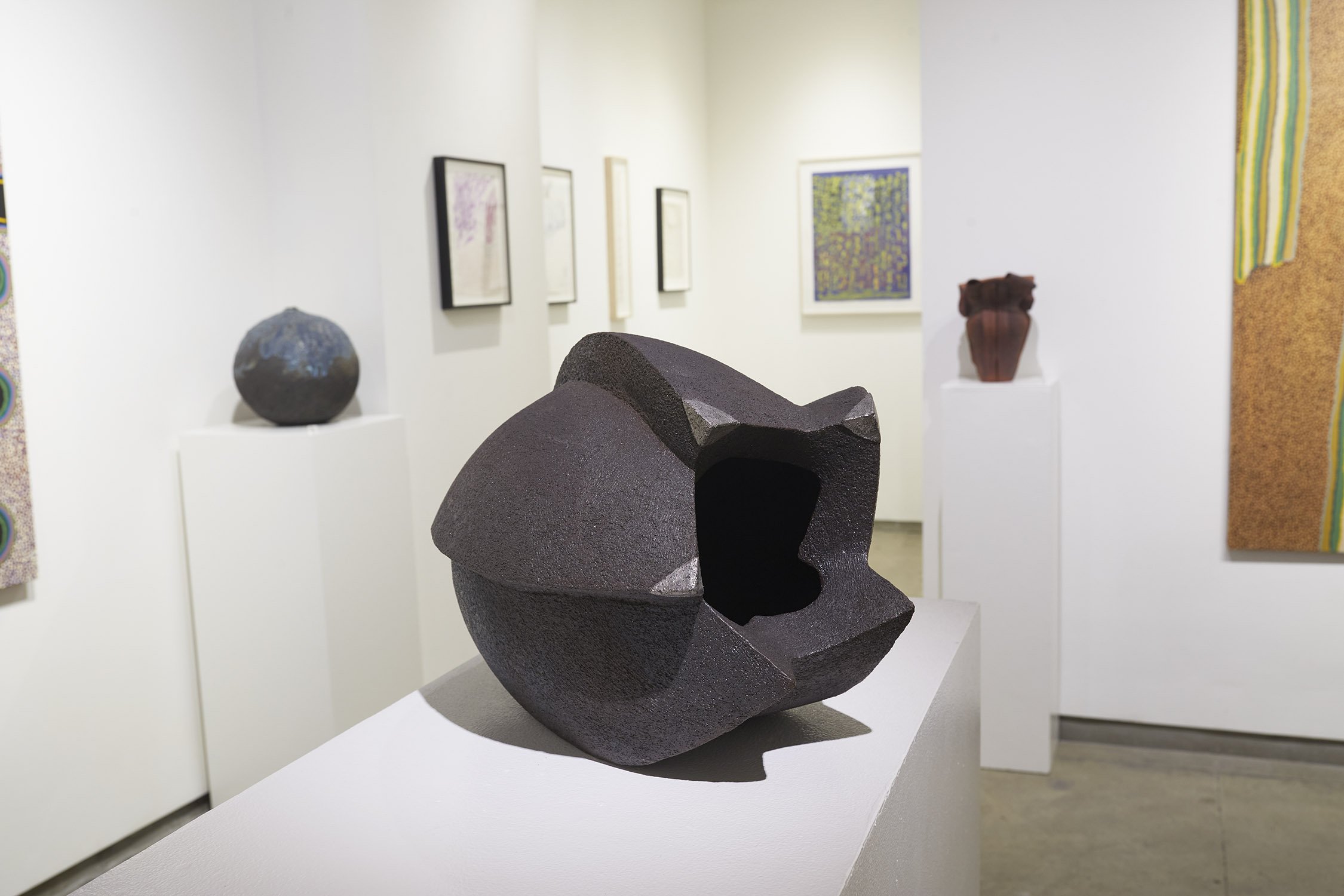
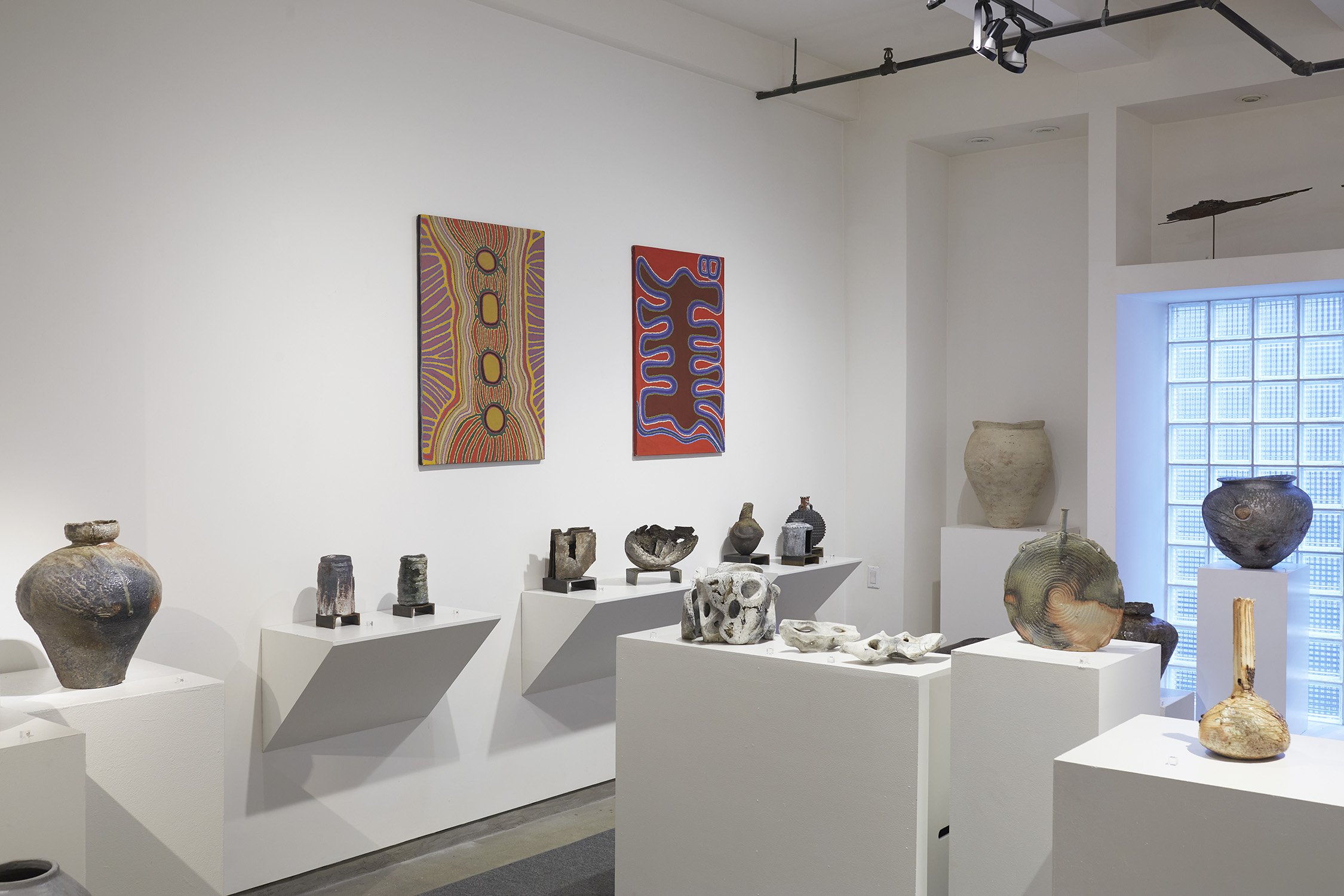
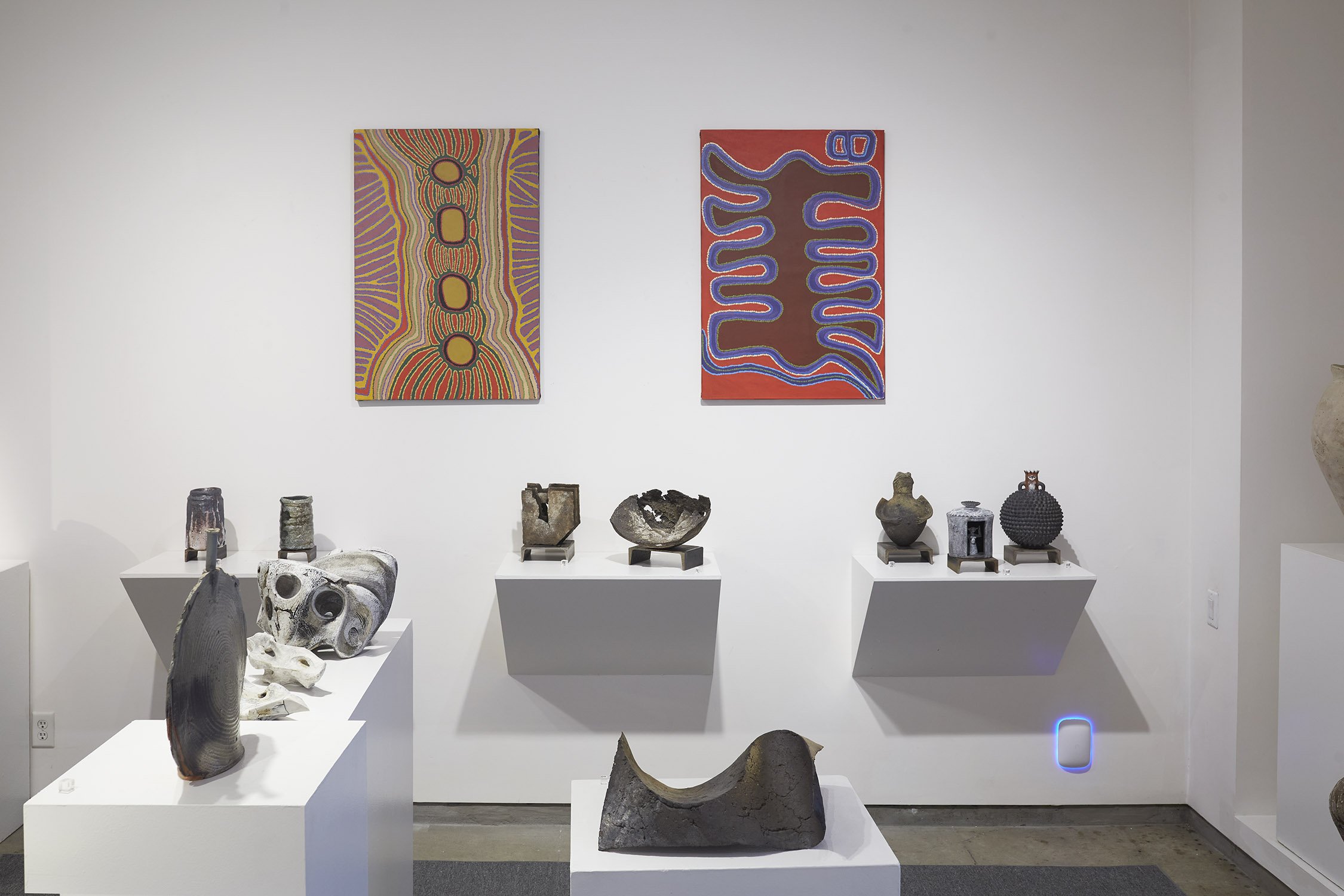
Pauline Sunfly Nangala paints her parents’ Country, her ancestral places south of her home at Balgo (Wirrimanu), which borders both the Tanami Desert and the Great Sandy Desert in northern Western Australia. Her striking paintings depict ancestral paths, ceremonial designs and the stories of important Tjukurrpa (dreamtime) sites associated with the native cat, goanna and kingfisher, all totemic animals.
Her mother, Bai Bai Napangarti (c.1935–2020), a law woman and senior Elder of the Balgo community, is a Ngardi woman whose Country extends from Mangkayi in the Stansmore Ranges to just south of Yagga Yagga. Her late father, Sunfly Tjampitjin (c.1920–1996), was an important Kukatja law man who was born further south, at Murrunpa (the Alec Ross Range) near Wilkinkarra (Lake Mackay).
Pauline was born at the old Balgo Mission in 1957. Bai Bai introduced her three daughters to painting at an early age, teaching them Tjukurrpa (creation stories and lore) through mark making. Pauline became an adept painter in her own right as a young woman, learning her craft through time spent sitting and painting with her parents.
From her parents she inherited an ancient way of knowledge and techniques, making it her own visual language as well. Pauline expertly combines both their hands. Together with her father’s striking designs and her mother’s dazzling color, the student becomes the master. Pauline is also an extraordinarily brave female artist. Painting stories passed on to her by her father, she defies tradition, breaking away from conservative desert painting.
The Dreaming in Indigenous Australia is passed generation to generation. It holds the Law, protected and interpreted by culture bearers. It is the spirit of a culture. Pauline Sunfly’s parents were holders of that knowledge. They were and are the culture bearers of an animistic way of perceiving the world, immersed in a worldview that perceives the universe on one hand and place on the other in a simultaneity of past, present and future. The earth itself holds the universal patterns of tribal existence. The indigenous people are its soul and this deep encompassing perception is called Country.
These patterns manifested in the visual painting on the walls of caves, on bark, on skin, on the earth itself and later; after a ceremony was performed to bless acrylic paint to augment earth pigments, it continued to manifest in her multi-dimensional paintings. She works in the artist-owned and managed group of Warlayirti in the Balgo Hills where Sunfly’s parents settled and Pauline Sunfly herself spent her life and still lives, passing on, and personally interpreting the Country of her parents.
Cavin-Morris Gallery is privileged to present these previously unseen new paintings to an American audience.









